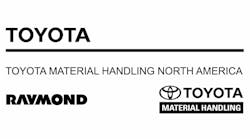It’s strange to think that objects we see everyday have historical significance, but in the environs of industrial manufacturing — especially forging — the presence of history is a bit clearer, more monumental. We can imagine a large open-die press as a landmark. Recognizing history in processes is more of a stretch for many manufacturers, who are practical, always open to a simpler or better approach. They prefer not to pause and reflect. Their instinct is to get on with the process.
Since 1952 nothing really has improved on the concept of “flood welding” as a process for getting back to work, for getting more work done, and as a result Weld Mold Co. was presented with the ASM Historical Landmark Award for 2017, a designation that recognizes the company’s role in developing the flood-welding process for repairing forming dies.
Flood welding (or “Progressive Manual Cast Welding”) is a die-repair technique by which a stream of molten metal produced by an electric arc is laid into a worn steel-alloy die cavity. By filling in those gaps and voids that develop in the process of forming hot metal under the heavy forces of pressure and heat, forging dies are restored to the original design and returned to service.
The first recorded flood-weld repair of a forging die took place in 1952 for Chrysler’s Detroit Forge Plant, a project carried out by Weld Mold Co. in suburban Detroit.
Weld Mold Co. founder Matt Kiilunen (1905-1990) is credited with innovating the process for die repairs, which remains a focus for the company’s products and technologies.
Kiilunen’s development of the “pack rod” for high-volume deposition welding was the first innovation in the development of flood welding. The oversized welding electrode is necessary to produce the volume of metal necessary to fill the cavities that develop in the course of die forging.
The patented Weld Mold Arm, which Weld Mold developed in the mid 1950s to allow welders to work with electrodes up 5/8-inch in diameter and up to 30 inches long, significantly improved the deposition rates.
“The introduction of Flood Welding to the forging industry has had a significant impact on cost control, productivity, and profitability,” according to the presentation remarks by ASM International president Dr. Frederick Schmidt.
Schmidt continued: “For the forge (shop) that properly applies it, the process and material have …eliminated the need to keep large stocks of new die steel on hand because dies are no longer scrapped … increased productivity of each cavity by as much as 300% …increased production run time …eliminated or reduced shimming …eliminated the requirement for full face re-sinks …made it possible to repair forging components indefinitely … reduced tooling costs per part by 30-50% … (and benefitted) all forging methods,” by reducing costs and improving productivity.
Other industrial and engineering achievements to be designated ASM Historical Landmarks have included the first Heroult electric melting furnace, the Statue of Liberty, the Liberty Bell, and the Eiffel Tower. Other companies to have earned the award have included AT&T, Republic Steel, and General Motors.
ASM International is the world’s largest and most established materials information society in the world, providing reference content and data, education courses, international events, and research.
Of course, Weld Mold Co. continues developing welding processes and manufactures welding electrodes, cored wire, and solid wire products for general welding and forge welding.










